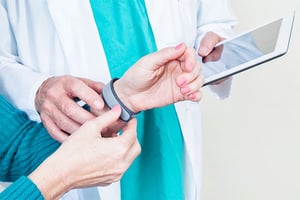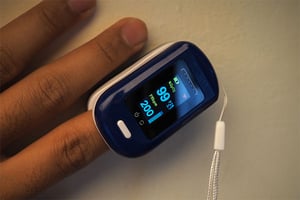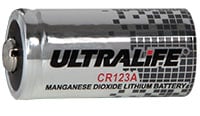~ Remote patient monitoring could grow by 128 percent but is the power sufficient? ~
The remote patient monitoring (RPM) market is projected to be worth over £1.4 billion by 2027. However, there are still challenges that need to be solved to ensure the widespread adoption of healthcare diagnostics at home, including around the power source. Here, we explore the benefits and difficulties of meeting these growth plans and look at how non-rechargeable batteries can help.
 Over 78,000 patients across England were supported at home using remote patient monitoring equipment between November 2020 and May 2021 and, whilst this is only a small percentage of the UK population, the benefits were substantial. One NHS Trust in Kent found that hospital readmission had reduced by 22%. It is, therefore, no surprise that the RPM industry is projected to see a 128 percent increase in market value by 2027.
Over 78,000 patients across England were supported at home using remote patient monitoring equipment between November 2020 and May 2021 and, whilst this is only a small percentage of the UK population, the benefits were substantial. One NHS Trust in Kent found that hospital readmission had reduced by 22%. It is, therefore, no surprise that the RPM industry is projected to see a 128 percent increase in market value by 2027.
For these growth plans to succeed, the devices and sensors that RPM relies on must work effectively. The sensors, typically worn by patients whilst going about their daily lives, are used to record the health data the doctor needs. Portable devices can then be used to record and report on this data. In the early days of RPM, dedicated devices were manufactured to display data to the patient but, nowadays, mobile phones and tablets are increasingly being used.
 This is where one of the problems lies, particularly for older or non-technically savvy patients who are asked to monitor their health from home, unsupervised.
This is where one of the problems lies, particularly for older or non-technically savvy patients who are asked to monitor their health from home, unsupervised.
Statista suggests that only 65% of people aged over 65 use a mobile phone and Age UK recently reported that over 75 years olds are least likely to be online, creating a barrier for elderly people using any internet-powered devices.
This problem escalates when you consider that just over half of 65 to 74-year-olds have at least one long term health condition, many of which could potentially be managed with an RPM device. This increases to two thirds of those aged 85 and over.
In this instance, mobile phones and tablets seem less effective than the old method of using dedicated devices. For example, if a non-technically savvy patient’s heart rate needs to be remotely monitored, they may not have a mobile phone but could be issued with the specially made device that they can glance at to see their heart rate in close to real-time, which could sound an alarm if a problem is detected. However, a potential pitfall is that the patient may not hear the alarm or may forget to look at the device. Therefore, there are also sensors that do not communicate data to the patient but instead relay it straight to healthcare professionals.
 The challenge there is how to transmit data over a long distance, which is where selecting the optimum battery can be crucial.
The challenge there is how to transmit data over a long distance, which is where selecting the optimum battery can be crucial.
Non-rechargeable batteries like Ultralife’s US-manufactured CR123A (UB123A) are ideal as it has a high pulse discharge of up to 3,000mA, so can deliver more power to aid data transmission.
It is not just transmission distance that can cause a problem for RPM devices, however. A widespread issue with RPM is data loss that could occur from users forgetting to charge the device or from loss of power. With non-rechargeable batteries, the wearer does not have to think about charging the device and Ultralife’s batteries are designed to have high reliability.
As well as selecting the optimum battery to power the RPM device, manufacturers should also consider the best way to power its wearable sensor. Encouraging the wearer to keep a sensor attached to their body is unlikely to be successful if it is too bulky or uncomfortable. Therefore, sensors are often manufactured to be as small and lightweight as possible, which are considerations that affect every component down to the battery. The battery must also offer high-performance to accurately record the data.
 An example of a suitable range of high performance batteries is Ultralife’s pre-engineered Thin Cells® that boast max. continuous discharge currents up to 500mA (battery dependent). Manufactured as thin as 1.1mm (0.043 inches) with an energy density of up to 400Wh/Kg, they are compact enough for many wearable devices. In addition to pre-engineered sizes, Ultralife Thin Cells® can also be made in custom sizes, giving them a distinct advantage over Coin Cells and other alternative power options.
An example of a suitable range of high performance batteries is Ultralife’s pre-engineered Thin Cells® that boast max. continuous discharge currents up to 500mA (battery dependent). Manufactured as thin as 1.1mm (0.043 inches) with an energy density of up to 400Wh/Kg, they are compact enough for many wearable devices. In addition to pre-engineered sizes, Ultralife Thin Cells® can also be made in custom sizes, giving them a distinct advantage over Coin Cells and other alternative power options.
Size, reliability and performance really matters when it comes to powering RPM sensors and devices. Both are susceptible to potential pitfalls that device manufacturers need to consider if devices are to be accessible for everyone and as comfortable and reliable as possible.
To find out more, select your product of interest below:



